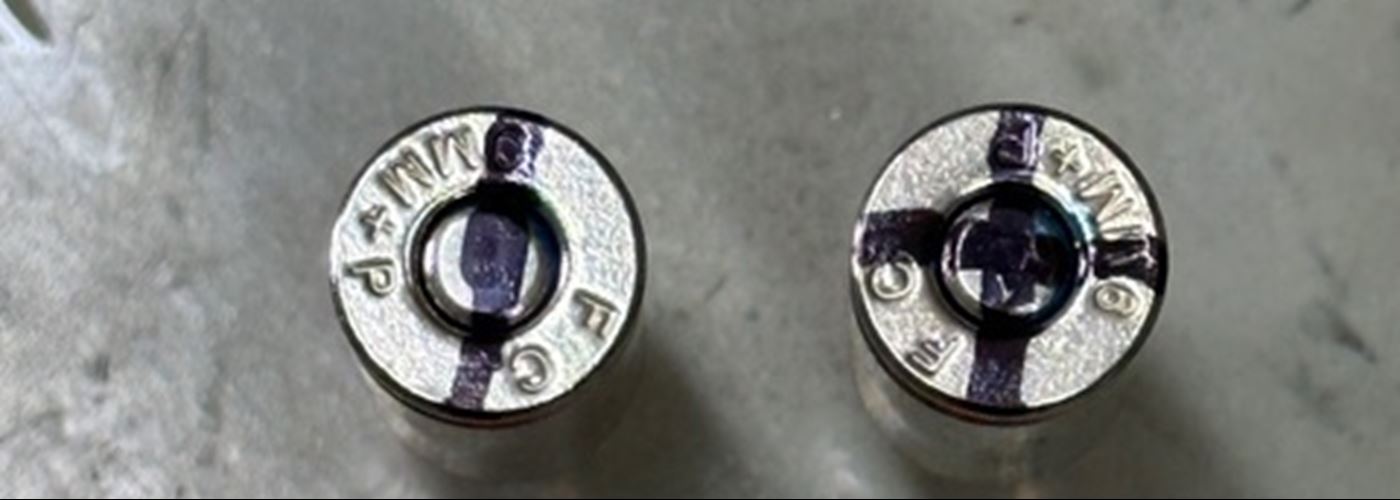
Recently, I've come across numerous social media posts discussing how often one should rotate their carry ammunition. Many suggest a specific timeframe, such as every six months. However, during a recent training class, I learned a method that I believe is more effective, based on real-world experiences. Additionally, I want to share some techniques I've used for several years to evaluate carry ammo against specific criteria before trusting my life to it. Let’s dive in.
Carry Ammo Preparation
I'm assuming you have already selected your brand of carry ammunition, so I won't spend much time on this subject, as there is a plethora of information available. Law enforcement agencies and ammunition manufacturers have invested significant resources in extensive testing of common types of carry ammunition. Use these tests to help guide your choices. Since 2007, I have exclusively carried Speer Gold Dot or Federal HST. There isn’t an appreciable advantage to one over the other, except for availability; sometimes, one is in stock when the other is not.
Always test your specific carry gun with the magazines you will carry, using the ammunition you intend to use. This evaluation not only verifies reliability but also checks the point of aim and point of impact if you are using iron sights. If you're using a pistol-mounted optic, take this opportunity to zero it with your carry ammunition. How much carry ammo should you fire to verify reliability? For me, that number is 200 rounds. If you can shoot more, that's even better.
I advise caution when selecting "specialty" ammunition with catchy names and projectiles designed to fragment or have petals that tear off into multiple pieces. It is best to choose something that is tried and true. For reasons that will become clearer later in this article, I purchase my carry ammo in cases of 1,000 rounds, and when stored correctly, it can last me a few years while remaining reliable. Now, let's get to the main points.
Rotating Ammunition
In addition to rotating your ammunition every six months or once a year, have you ever considered how many times a particular round has been chambered in your carry pistol and why this is important? Early in my law enforcement career, I had a co-worker who would unload his weapon at the end of his shift and reload it when returning to duty. One time, while at the range, he showed me a round that he had chambered and rechambered day after day. I was shocked to see how much the projectile was set back into the brass. Although I didn't have calipers to measure it, it was evident that the setback was significant enough to pose a danger. I cautioned him against firing it because it was a .40 S\&W high-pressure duty round. At that time, we only qualified with our carry ammunition once a year and issued fresh rounds for the following year. Consequently, he had cycled that particular round hundreds of times.
From then on, I decided if I noticed a setback in my primary round, I would discontinue using it. However, when I attended my first class with Tom Givens, he shared some information that I found very interesting. He cited a case involving a law enforcement officer who cycled the same round through his duty gun multiple times, much like my friend. This officer also unloaded his gun at the end of every shift and reloaded it before returning to duty.
During a use-of-force situation, the officer attempted to fire his weapon, but the round did not discharge. Fortunately, he was able to perform an immediate action drill and resolve the situation. Upon returning the inert round to the ammunition manufacturer for examination, they determined that repeated chambering had knocked the priming compound out of the primer. The compound then sifted through the flash hole in the primer pocket, rendering the round inoperative.
Since attending that class, I've adopted Tom's advice. Whenever I eject a round to dry fire or clean my carry gun, I mark the head of the case with a line using a Sharpie. If I eject the same round a second time, I add another mark, forming a cross to make it more distinctive. When a round has two lines on it, the next time I eject it, I load it into the bottom of my magazine. Once all the rounds in my primary magazine have two marks, I transfer them to my spare magazine. When I need to rotate in more ammunition because all the rounds have two marks, they are added to my training stash. Many instructors recommend using your carry rounds in low-light classes to observe the muzzle flash in the dark; I reserve these marked rounds for that purpose.

Culling Carry Ammo
Many assume that because defensive ammunition costs a premium, so it must undergo extra quality control measures and be flawless when it leaves the factory. However, after participating in extensive training courses that required duty ammunition, I have witnessed enough round failures to raise concerns.
When I first started at my previous agency, I heard the story of an officer who, during qualification a few months earlier, experienced a failure to fire with the duty ammo he was using. Instinctively, he performed an immediate action drill. When he pulled the trigger on the next round, the pistol was locked up. It was later determined that the first round had no powder in it. The primer had just enough force to push the bullet into the barrel, causing it to lodge there.
The subsequent live round firing pushed the projectile out when he performed the immediate action drill. However, the pressure generated from this action caused a swell in the barrel, which seized the slide and barrel together. As a result, his pistol was rendered useless until the officer returned the gun to the factory for repairs. It's important to note that while the ammunition manufacturer would cover the damages, the process would take several months to resolve. This situation is worth considering when deciding whether or not to carry a backup weapon.
Listening to the officer tell his story triggered my reloader instincts. I've been reloading my handgun ammunition since I was 14 and have developed quality control measures over the years. While many people use similar methods, I will discuss how you can adapt these techniques to carry ammunition.
At the police department, we ordered our ammunition for the year in January after receiving our new budget. We typically qualified in May or June, which meant the ammunition would arrive and sit in storage for a few months before we qualified with the previous year's ammo and issued the new supplies for duty. We didn't shoot only once a year; we conducted the state-mandated CPOST qualification course annually, while our monthly training used training ammunition.
During the interim period between the ammunition's arrival and qualification, I conducted two quality control checks on each round before issuing it to officers. These checks helped maximize their chances of functioning reliably.
Quality Control Checks
The first test is straightforward and doesn't require much equipment. I ran each round through a case gauge. I chose to use a case gauge instead of a plunk test in a barrel because the tolerances of a case gauge are made to SAAMI specifications. This check ensures that, as long as a chamber is within spec, the round of ammunition will fit. Testing rounds used in various pistols can be problematic since one chamber may have looser tolerances. Even if a round fits in one barrel, it may not fit in another that conforms to closer tolerances. Removing the barrel and performing a plunk test is acceptable for rounds intended for a single gun.

The next test is a bit more complex. I take one round from the new lot and use a collet puller in a single-stage reloading press to remove the projectile. I empty the powder from the case and then place the projectile and primed case on my reloading scale, zeroing the weight. After gauging the rounds, I weigh the loaded rounds on the scale. In theory, this gives me the weight of the powder charge in the case.


I say "in theory" because there are considerable tolerances when you factor in the weight of the projectile, brass, and primer. We're not testing for precision ammunition here; we need to ensure enough powder in the cartridge to guarantee reliable and relatively consistent performance. If a round weighs one grain less or more than the average, I'll set it aside as training ammo.
While these techniques aren't foolproof, they can significantly enhance your confidence in your self-defense system with only a minimal commitment of time and resources. By implementing these strategies, you can achieve greater peace of mind, knowing you have taken proactive steps toward reliability.
Interested in taking a firearms class near you? Trainers, register as a shooting instructor today.
